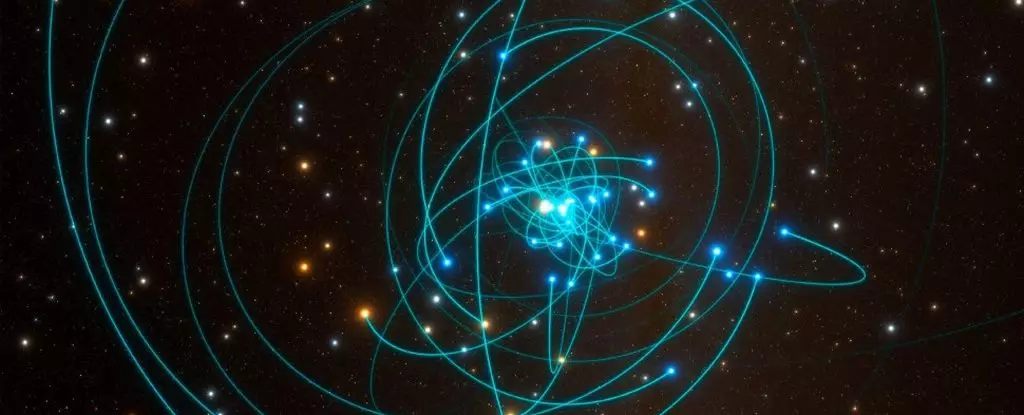In the annals of history, there are stories of individuals resorting to extreme measures in their quest for eternal youth. One such tale is that of Hungarian countess Elizabeth Báthory, who allegedly bathed in the blood of murdered girls to maintain her youthful appearance. While the truth behind these accusations remains shrouded in mystery, the notion of seeking rejuvenation through dark practices has persisted throughout the ages.
Recent research has uncovered a fascinating phenomenon in the Milky Way’s galactic center, where stars appear much younger than they actually are due to cosmic cannibalism. This region is home to a supermassive black hole, surrounded by a bustling population of stars hurtling through space at incredible speeds. The proximity of these stars to each other creates a chaotic environment ripe for interactions and collisions.
Studying the stars in the galactic center directly poses a challenge due to the dense clouds and obscuring materials present in the region. Astrophysicists like Sanaea Rose from Northwestern University have turned to simulations to better understand the dynamics at play. By creating a model of the galactic center, researchers can observe the outcomes of star interactions and collisions in this complex environment.
Through their simulations, Rose and her colleagues have discovered that the fate of colliding stars is closely tied to their proximity to the black hole. Stars within a certain distance exhibit grazing collisions, where they retain much of their mass but may lose outer material in the process. However, when stars collide beyond this boundary, they merge to form larger, more massive stars that appear younger due to an influx of hydrogen.
The Paradox of Youth and Mortality
While the rejuvenating effects of cosmic cannibalism give older stars a youthful facade, there is a trade-off in terms of lifespan. Massive stars, akin to gas-guzzling cars, burn through their hydrogen at a rapid pace, shortening their existence. This phenomenon explains the scarcity of old red giant stars in the galactic center, as collisions and mergers transform the stellar population over time.
Further research and observation are necessary to shed light on the complex dynamics of the galactic center and the implications of cosmic cannibalism on star formation and evolution. By delving deeper into these processes, scientists hope to unravel the secrets of one of the most unique cosmic environments in the Milky Way. As we peer into the heart of our galaxy, we may uncover new insights into the age-old quest for eternal youth and the cosmic forces that shape our universe.


Leave a Reply